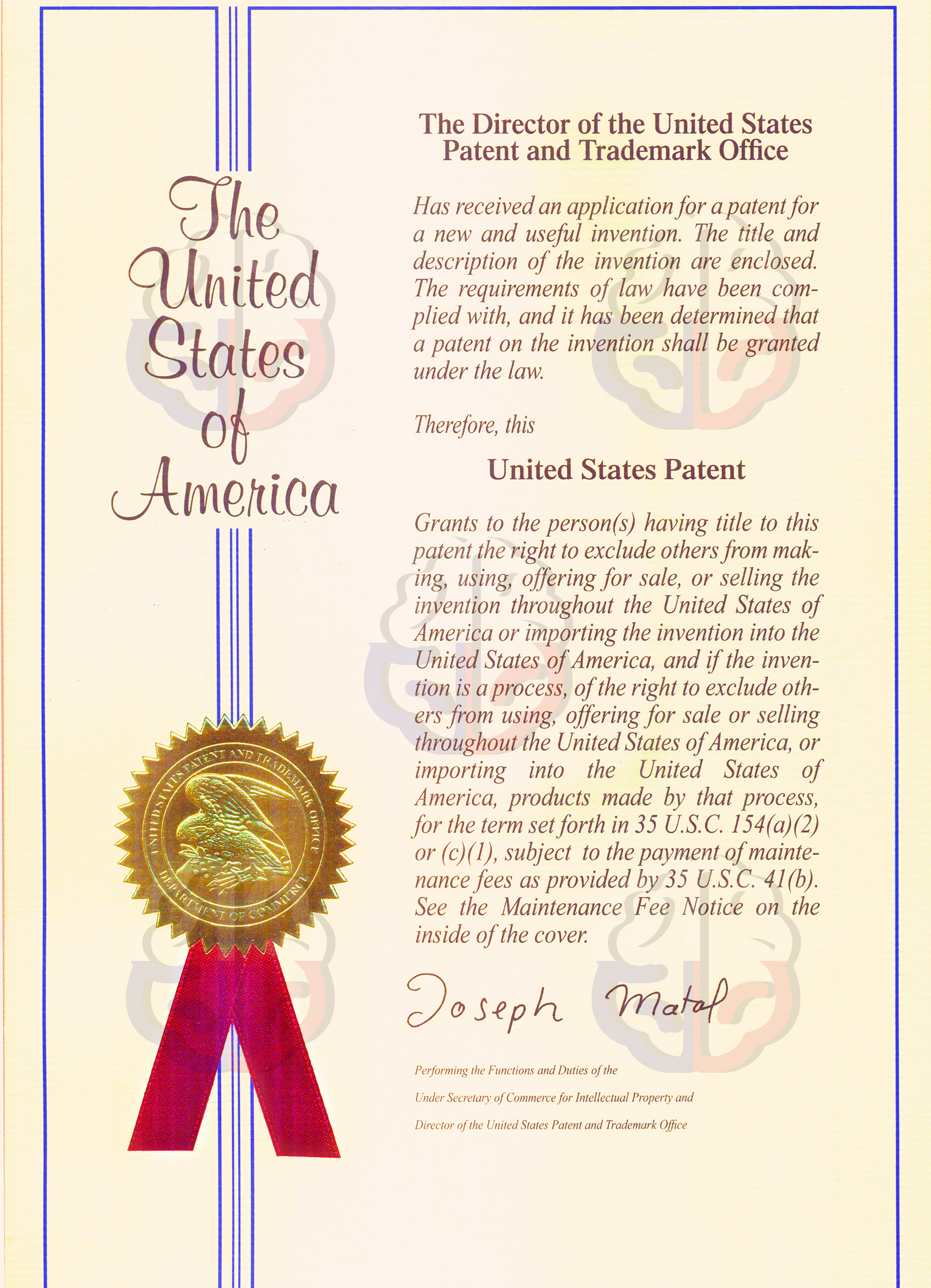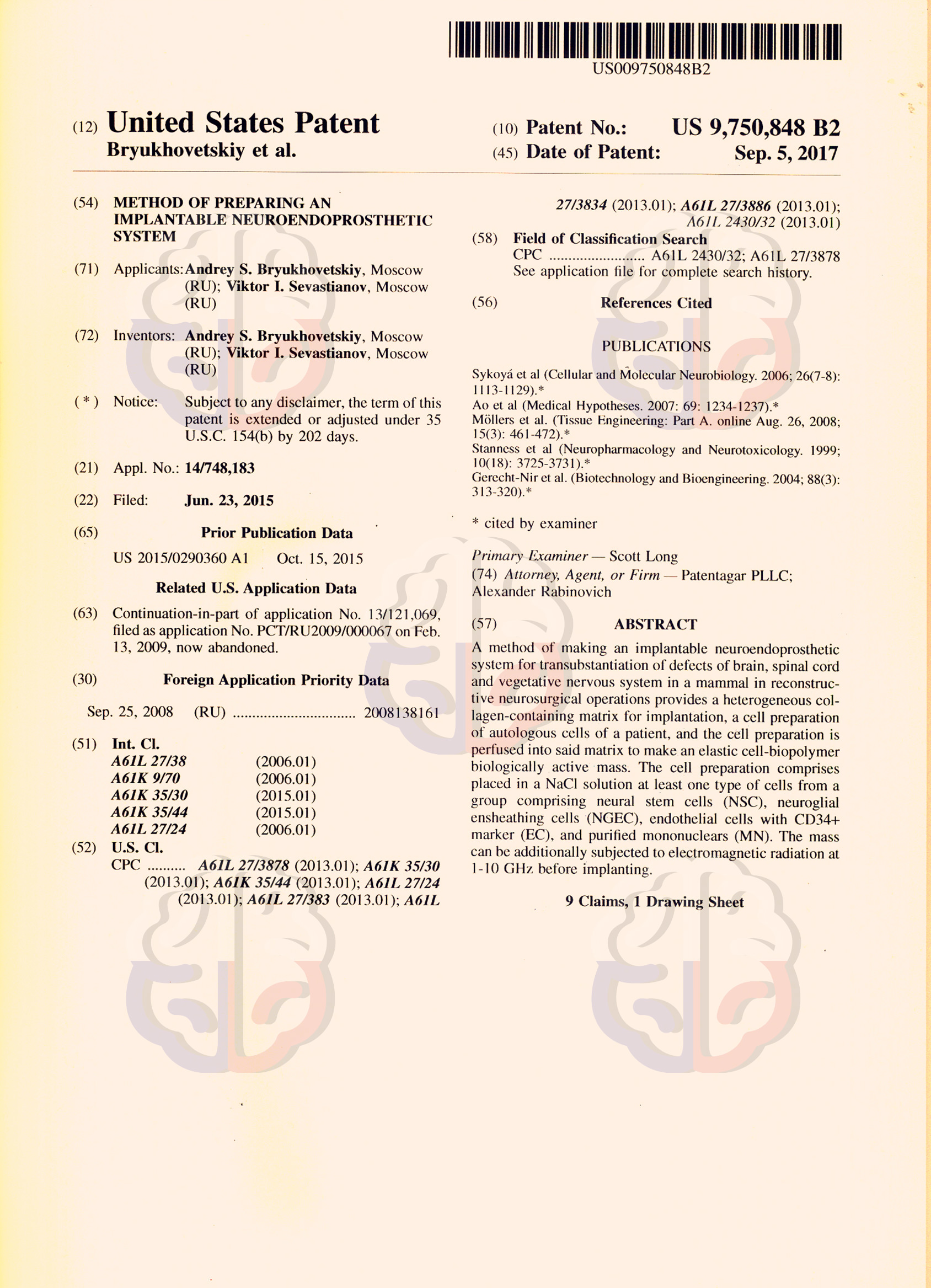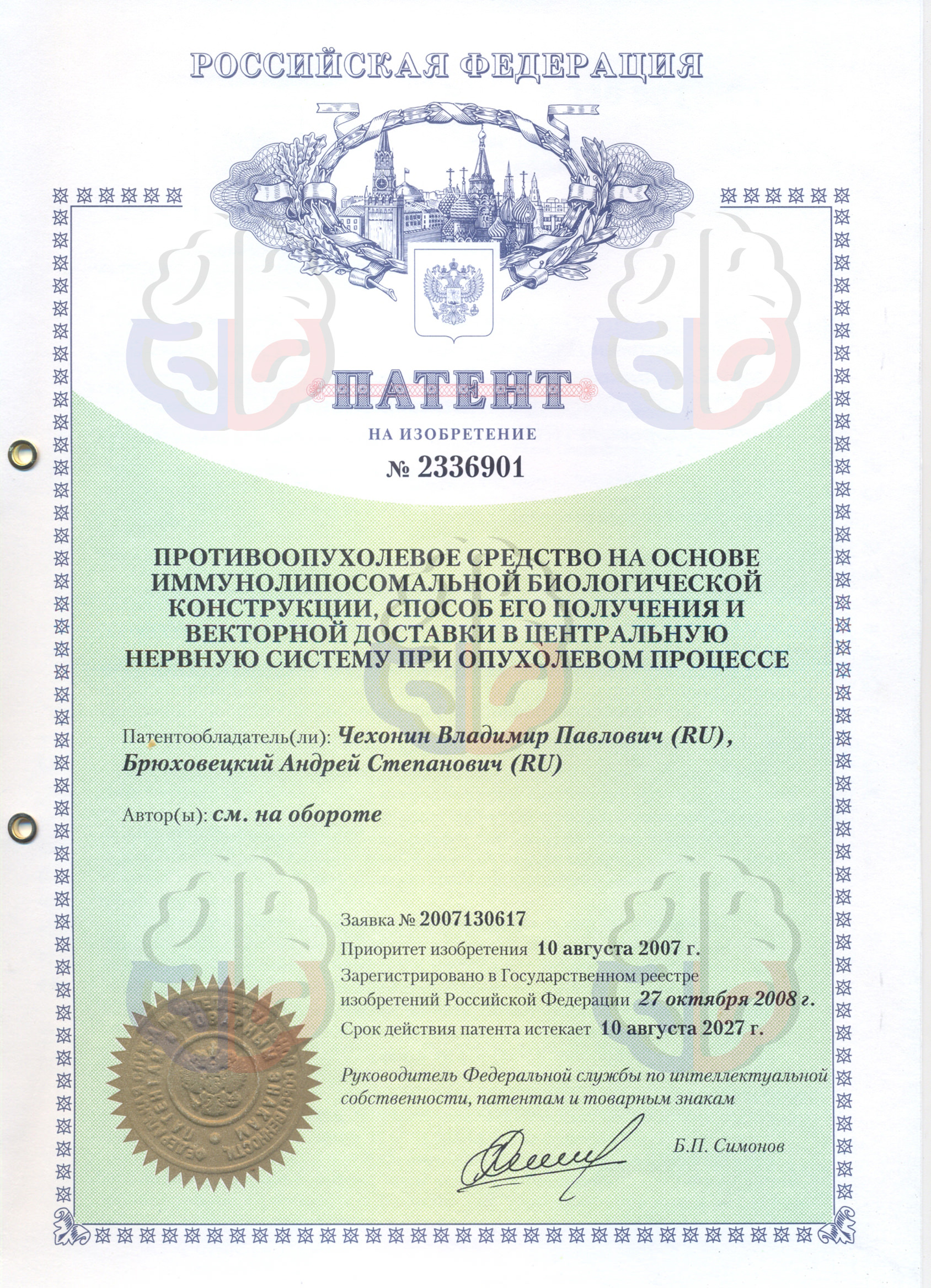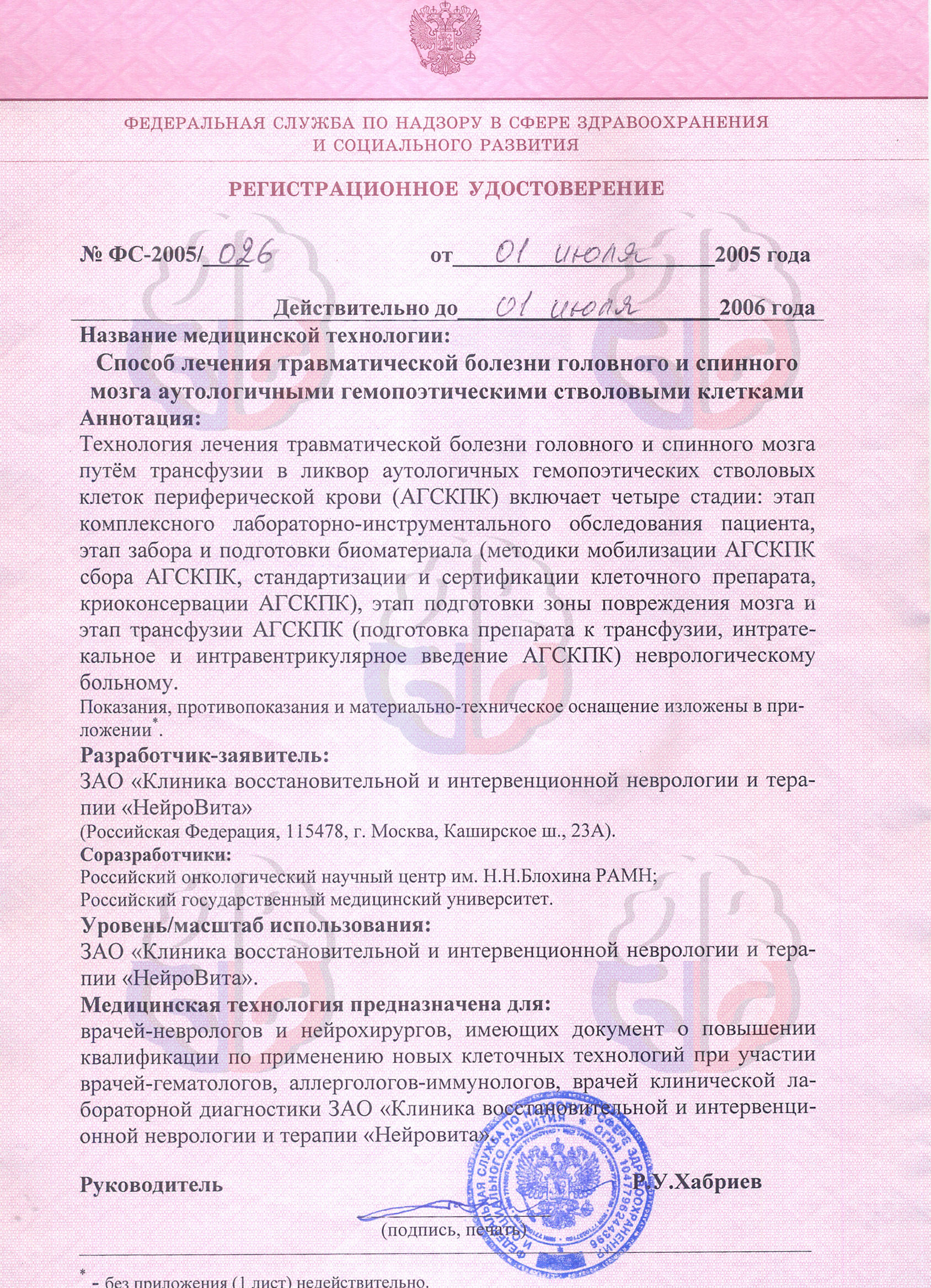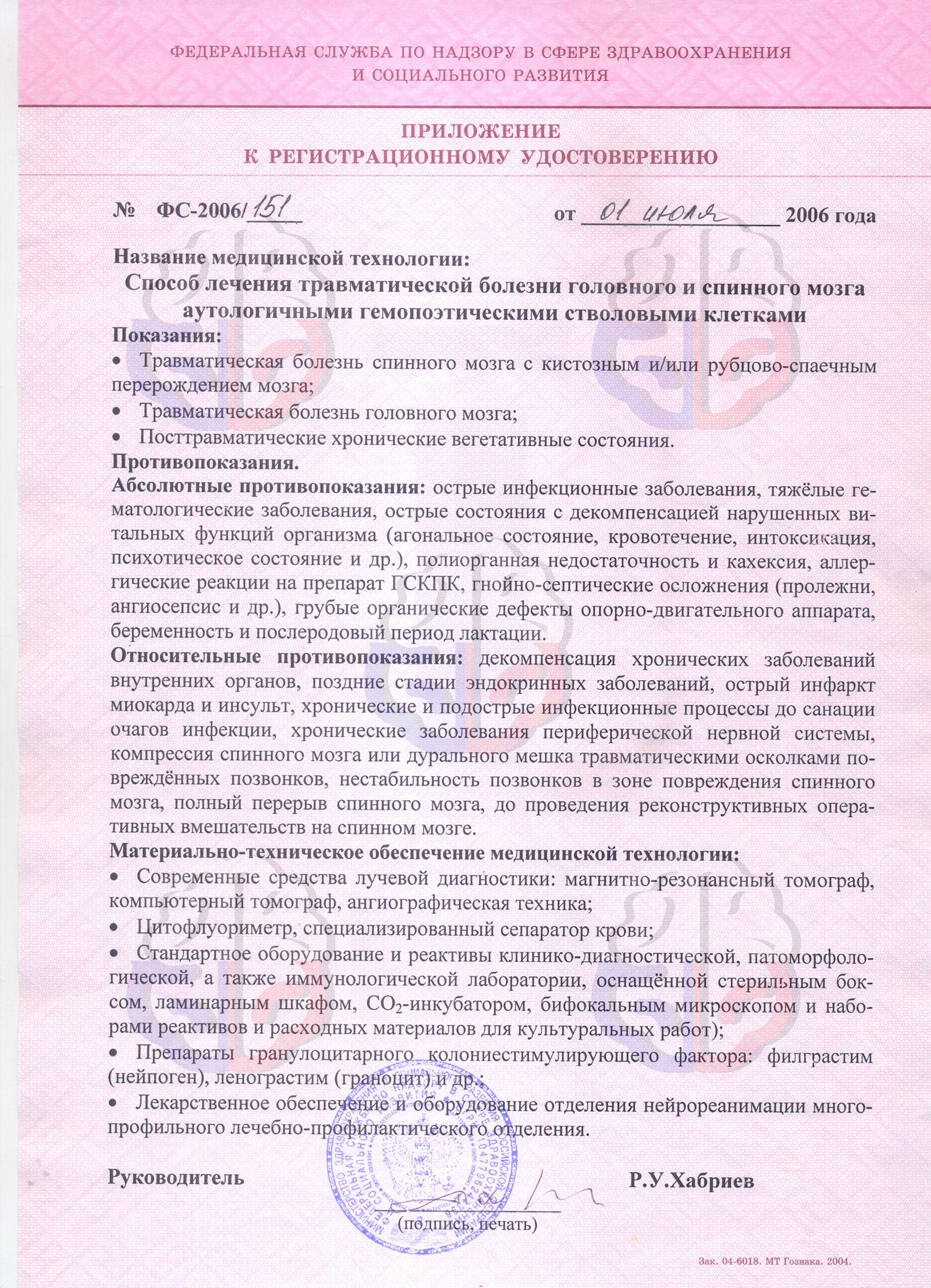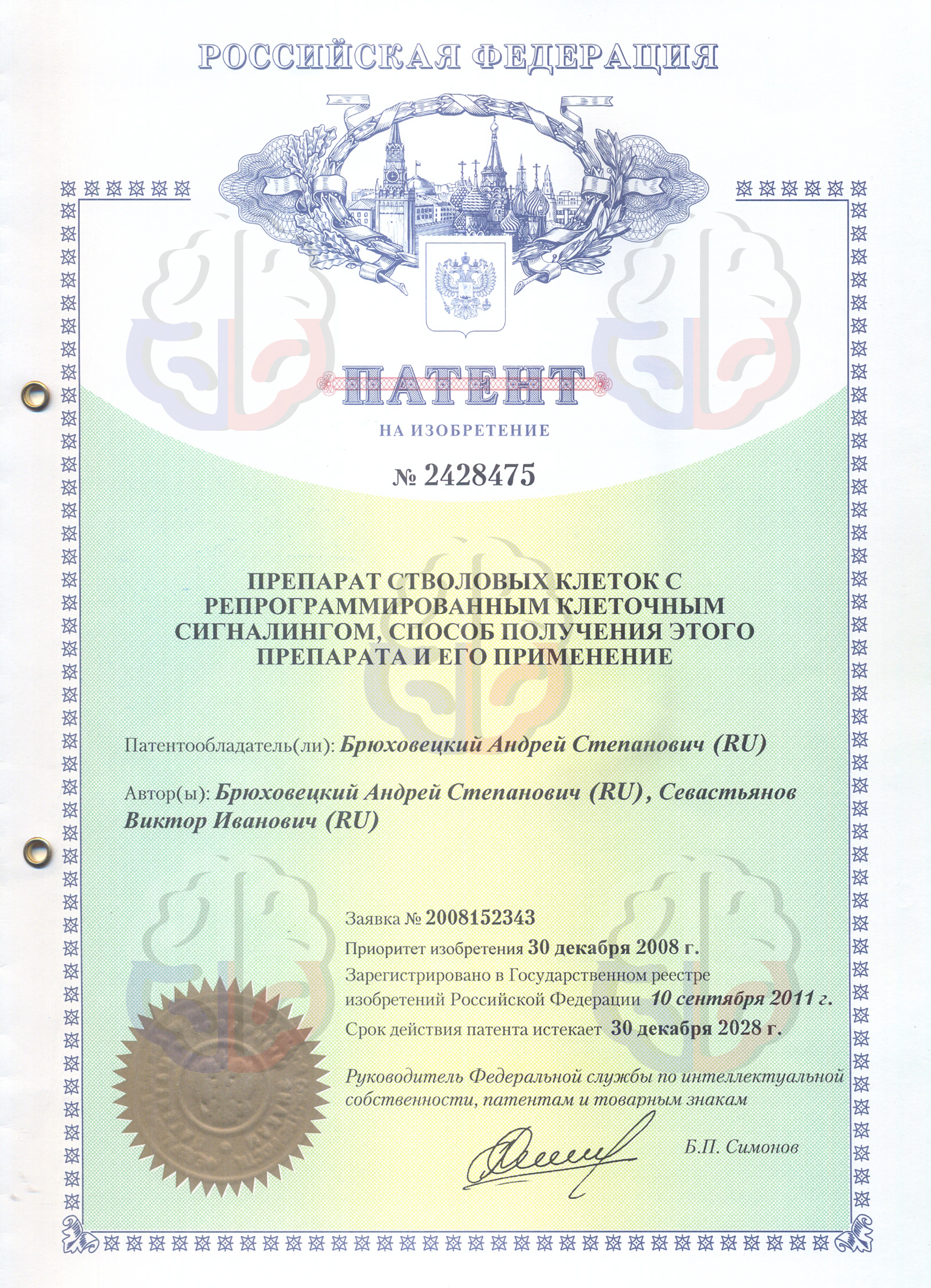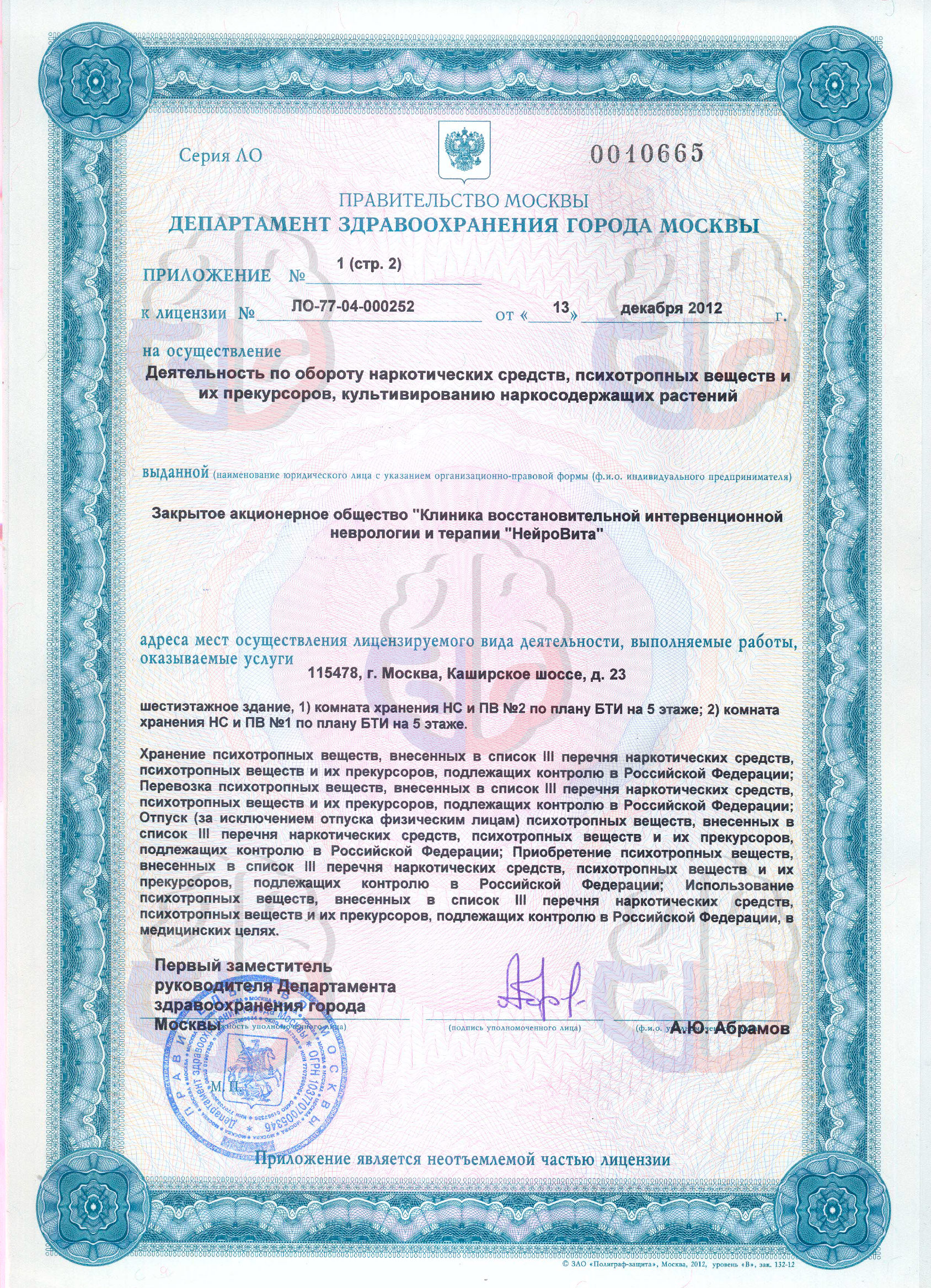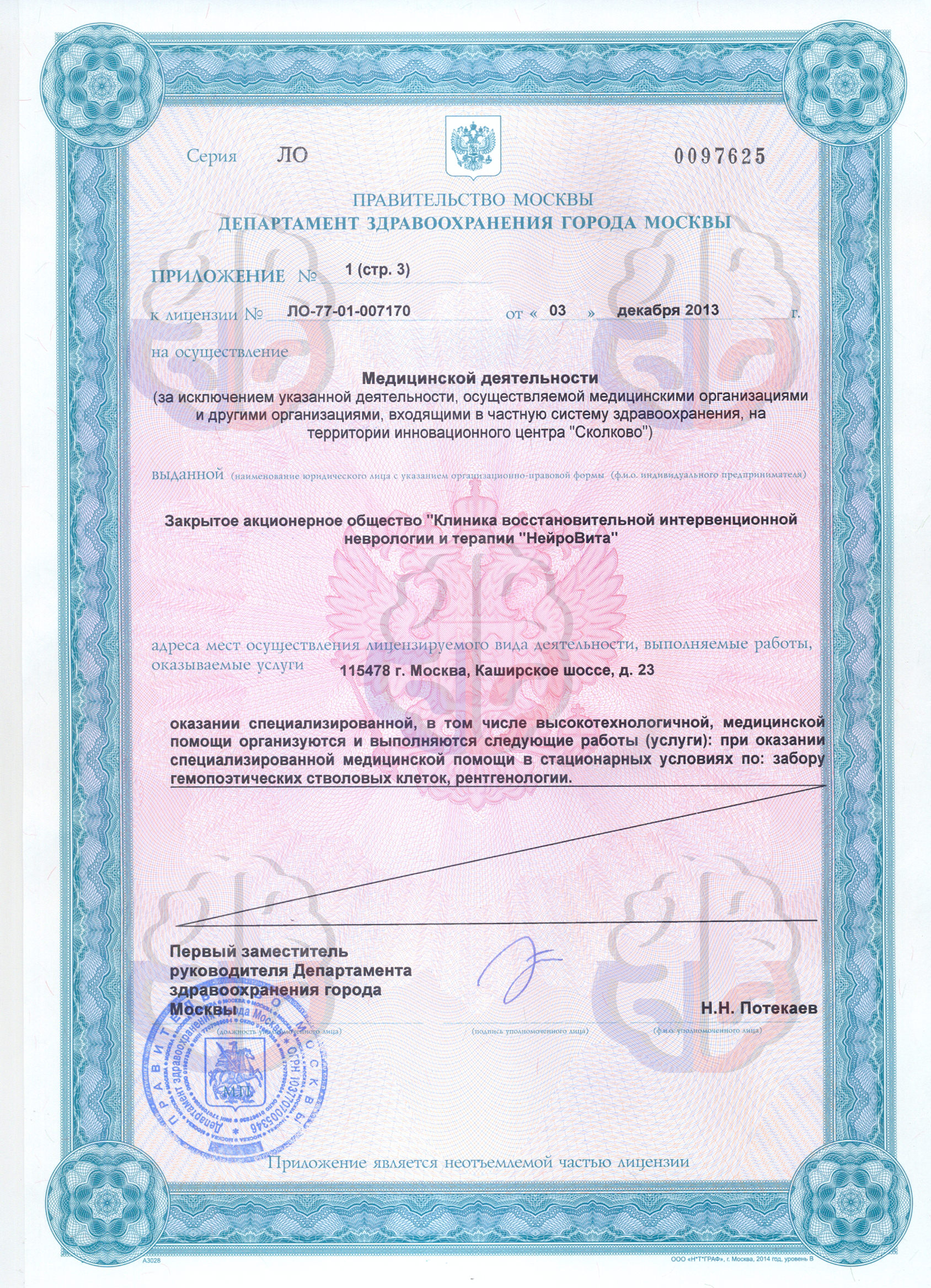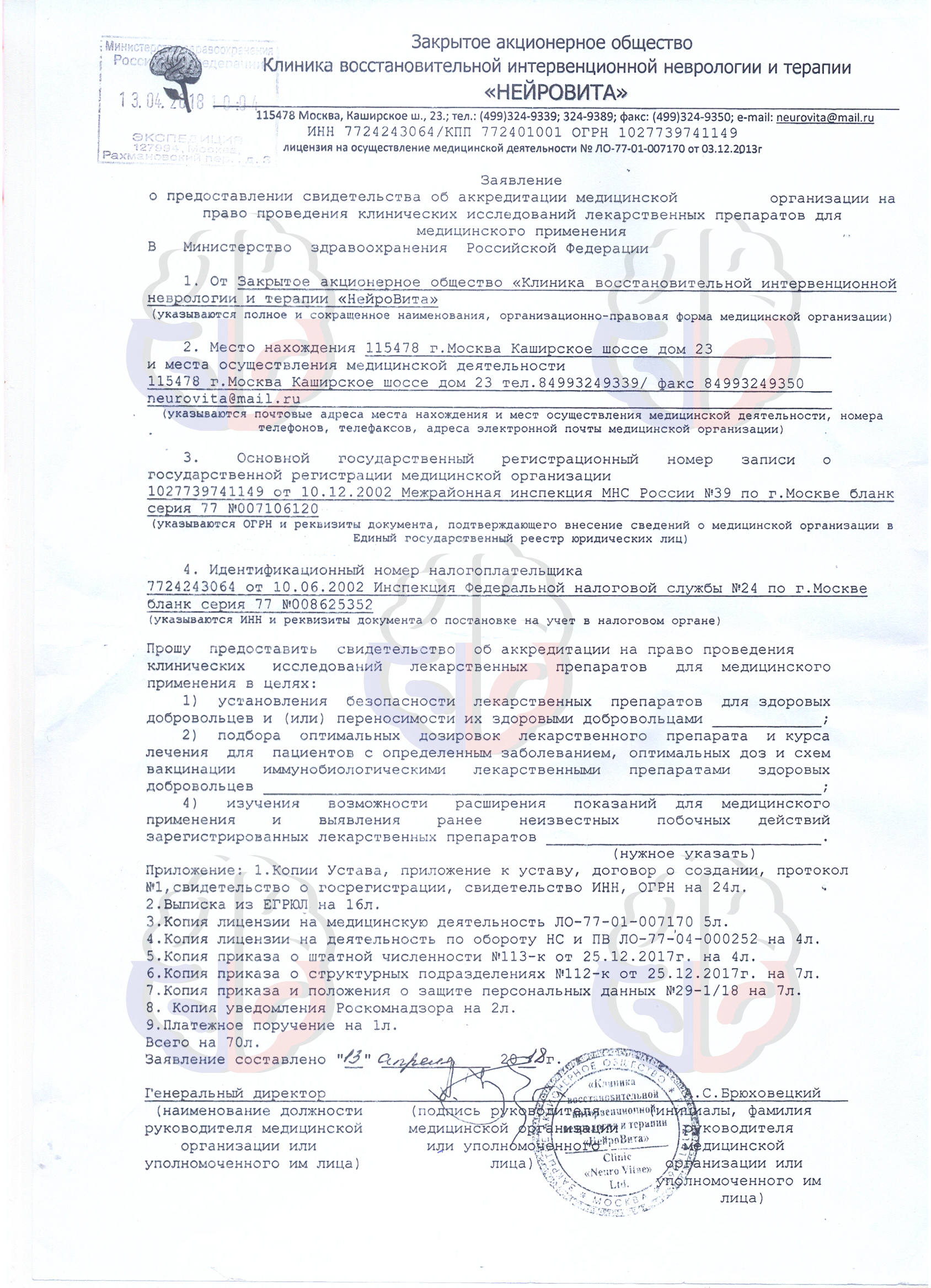The Department of Donation and Bone Marrow isolation
The Donor and Bone Marrow Isolation Departments
Most frequently the bone marrow is harvested for the transplantation as it is the only procedure that can return to life the patients with severe disorders of blood-forming (hematopoiesis). The number of the bone marrow transplantations keeps growing but still we are not able to meet all the demands. First, the procedure requires the search of the donor. Second, the costs of the preparation of the donor and patient, of the consequent treatment and follow-up are very high. Only large medical centers with appropriate equipment and personnel can propose this service, but not every patient and his or her family are able to cover it. Bone marrow transplantation is a very serious and long-term procedure.
Meanwhile, the features of the hematopoietic stem cells (HSC) and hematopoietic progenitor cells (HPC) are not limited to the restoration of the damaged blood formation (hematopoiesis) in cancer patients after high-dose chemotherapy. These cell systems are universal and they are highly efficient in the restoration of the regenerative potential of damaged tissues and organs. These cells clearly have anti-tumor characteristics and when combined with the cells of inherent immunity (NK-cells, NKT cells, B1-cells and γ∂ T-cells) are able to induce the graft-versus-tumor response. Also these cells can be the basis for the artificial immunity and help fight with autoimmune disorders. These features of hematopoietic cells open a new window of opportunity to treat the range of serious disorders, such as neurodegenerative, cardio-vascular, muscular-dystrophic and hereditary diseases, obesity, cancer and other solid tumors where the bone marrow transplantation is ineffective.
The hematopoietic stem and/or precursor cells are harvested either from the bone marrow directly, or from the peripheral blood during the leukapheresis, or from the umbilical cord. The umbilical cord blood is a good source of the HPCs and does not require the special preparation of the donor or complex procedures to harvest the material. Original method to harvest the hematopoietic tissue was to extract the bone marrow from the hipbone with a long needle so other manipulations are often called the bone marrow harvest.
Depending on the origin of the stem cells, the autologous and allogeneic HSCs and HPCs are distinguished.

The autologous HSCs and HPCs are harvested from the patient. This is a good option in those cases when the bone marrow is not damaged by the tumor or other disease. For example, the lymphoma keeps growing in the lymph nodes but with the time it can disseminate into the bone marrow and turn to leucosis. In this case the uninjured tissue of bone marrow can be harvested for future transplantation or non-transplanting therapy with HSCs and HPCs. The planned transplantation of the cells permits more aggressive chemotherapy.
The allogeneic HSCs and HPCs are harvested from the donor, the relative or a carefully matched individual. This type of cells is indicated in the cases when autologous bone marrow cannot be harvested for various reasons. So, the volunteers who are ready to provide their tissues come to help those in need to save their lives and restore the damaged function.
The donor of the hematopoietic tissue should know that
- The main method to get HSCs and HPCs is to harvest the bone marrow from an individual.
- The donor is the person who volunteered to give his or her hematopoietic tissue or HSCs/HPCs. It is a serious decision so all donors have to understand their responsibility.
- Everyone who has reached lawful age and under 55 can be a donor. You cannot be a donor if you had hepatitis B and/or C, if you have HIV, psychiatric diseases, tuberculosis and malignant disorders.
- There are the registries of bone marrow donors that total over 25 million people. Most of them are the residents of the USA, among European countries Germany counts over 7 million bone marrow donors, while Belarus has 28 thousand and Russia only about ten thousand.
- Search for the donors is a complicated and responsible procedure. When the donor is necessary, first the close relatives are examined as they show the highest possibility to match the patient by the antigens of histocompatibility. The opportunity for the patient to be compatible with siblings is evaluated as 25%, but if the patient has no siblings, the international registries have to be searched.
- The race and ethnicity is of high importance for the donor. It is extremely difficult to find a donor in other countries for those who belong to indigenous small ethnic groups, and even Caucasian population of the USA, Europe and Russia has diverse range of the antigens of histocompatibility.
- The principles of donor selection for the bone marrow transplantation are based on the match of the antigens of the HLA histocompatibility system. It is known that white blood cells and other cells of the body carry a very specific set of proteins on them, and these proteins define the antigen individuality of each of us. Our organism judges what is foreign and what is not by these proteins, and thus it is able to provide the immunity against the foreign bodies and show no reaction to its own tissues.
- The human leukocyte antigen (HLA) system is coded by the DNA sites located on the sixth chromosome; they constitute the main complex of histocompatibility. During the fertilization the fetus gets half of the genes from the mother and the other half from the father, so the chance that the genes match is very high. The monogerminal twins have identical antigens so they are an ideal donor and host pair. The need in transplantation between the twins is rare and other people have to look for non-related donors whose HLA system maximally coincides with the host’s. There are the so-called antigens that are very similar in structure, they are known as heterogeneous and they increase the degree of compatibility.
- The principles of finding the donor match for non-transplantation are based on the matched blood group, Rh factor, blood phenotype and, if necessary, alloreactivity, which is defined by the antigen mismatch of the host’s HLA I type system and KIR receptors of the donor immune cells. Frequently, it is easier to find the biomaterial for the non-transplantational purposes.
Why is it important to find the best matching donor?

It is all about immune reactions. On the one hand, the host’s organism is able to detect the donor’s tissue as foreign, and, on the other, can induce the immune reaction towards the transplant. In both cases, the tissue is rejected, the desired effect is not achieved and, moreover, the outcome can be lethal. As far as the bone marrow transplantation requires complete elimination of the host’s hematopoietic system and immunosuppression, it is possible to receive the graft versus host disease. The organism of the host does not give immune response to the foreign cells, but the transplanted active bone marrow of the donor is able to produce strong immunological reaction to reject the transplant.
The potential donors are typed by HLA using expensive and complex tests. Before the procedure, these tests are repeated to confirm the compatibility of the donor and the host. It is obligatory to test for the so-called pre-antibodies that could have developed in the previous blood transfusions or pregnancies in women. Even if the degree of HLA compatibility is high, the pre-antibodies present a contraindication for the transplantation as they lead to the acute rejection of the tissue.
Isolation of the donor hematopoietic tissue
When the donor is found, he or she has to pass through the procedure of the tissue isolation. The donation of bone marrow implies complicated and painful procedures; the potential donors are well informed about this and are fully aware about the importance of their participation and the responsibility, so that the refuses are extremely rare. It is inacceptable to refuse from bone marrow donation when the patient has already passed through the stage of conditioning, ten days before the transplantation. They must know that the host dies when his or her own hematopoietic tissue is eliminated and not replaced.
To isolate the hematopoietic tissue the donor becomes an in-patient for one day. The procedure requires general anesthesia. The doctors puncture the upper hip bone where the bone marrow tissue is most abundant with special needles. The number of punctures can be up to 100 and more. It takes about two hours to receive one liter of the bone marrow tissue, but this will provide the host with a new organ of blood forming and consequently with the life. If the transplantation is autologous, the obtained material is frozen.
After the bone marrow isolation the donor feels pain in the site of punctures but it is safely relieved with analgesics. The removed volume of the hematopoietic tissue is replenished within next two weeks.
 The mobilized HSCs and HPCs are obtained in a different way. The donor receives special growth factors that promote migration of the cells to the peripheral blood for four or five days before their isolation. In the end of this preparatory stage the donor has passes through the procedure of aphaeresis to gather the stem cells. The procedure takes up to five hours, while the donor is hooked up to the special equipment that gathers his/her blood and separates the stem cells from the rest. Totally, about 15 liters of blood passes through the apparatus during the aphaeresis and about 200 ml of stem cells are obtained.
The mobilized HSCs and HPCs are obtained in a different way. The donor receives special growth factors that promote migration of the cells to the peripheral blood for four or five days before their isolation. In the end of this preparatory stage the donor has passes through the procedure of aphaeresis to gather the stem cells. The procedure takes up to five hours, while the donor is hooked up to the special equipment that gathers his/her blood and separates the stem cells from the rest. Totally, about 15 liters of blood passes through the apparatus during the aphaeresis and about 200 ml of stem cells are obtained.
After the aphaeresis the donor can feel some pain in the bones which is associated with the stimulation and the expanded volume of the bone marrow.





